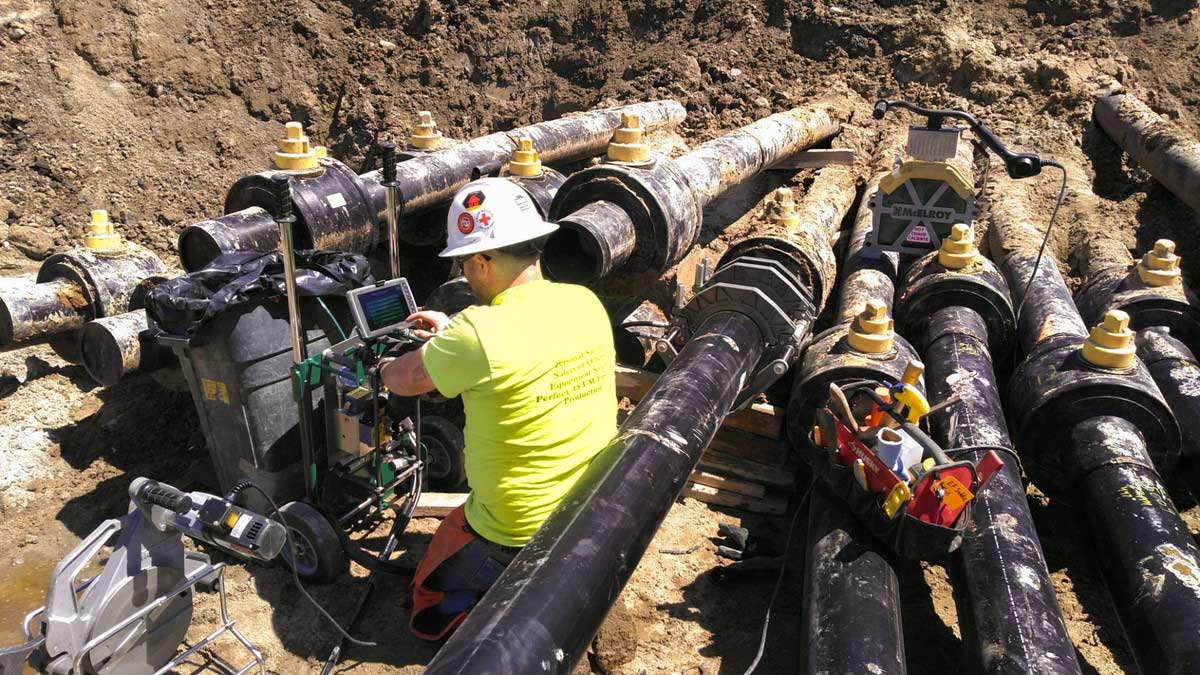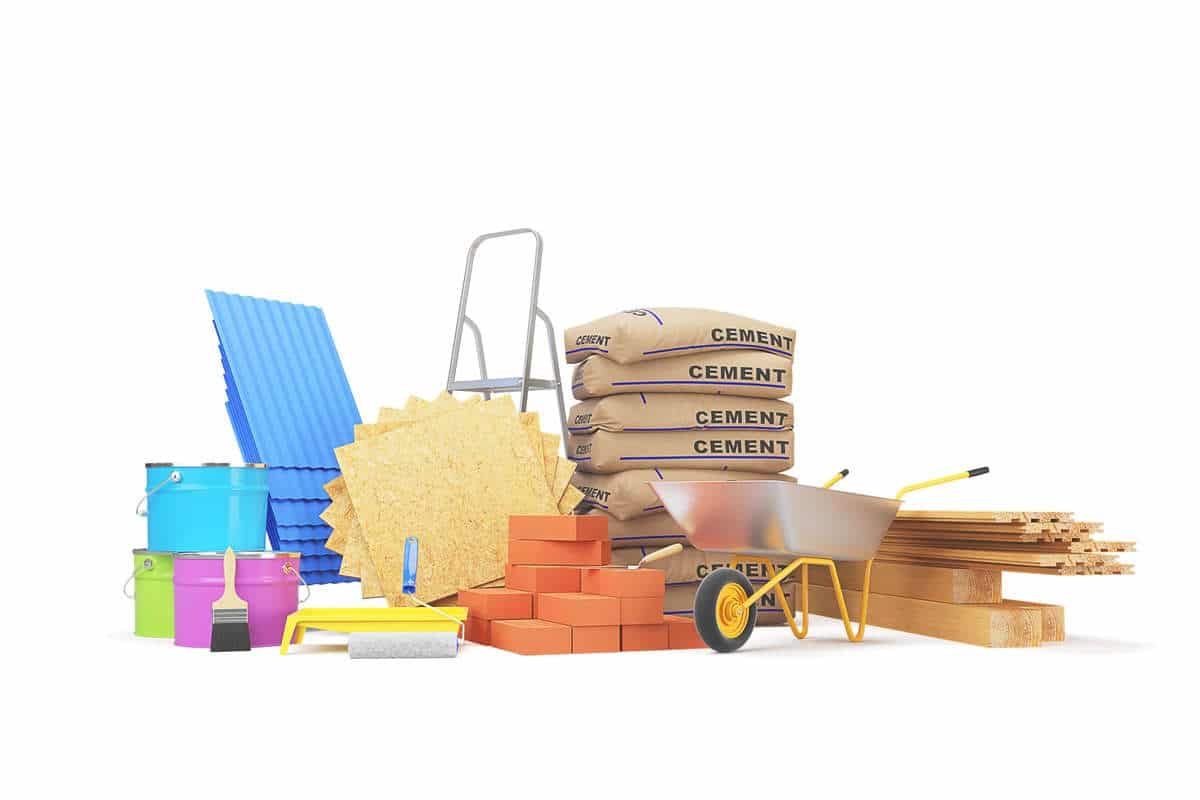Dominating Down Under
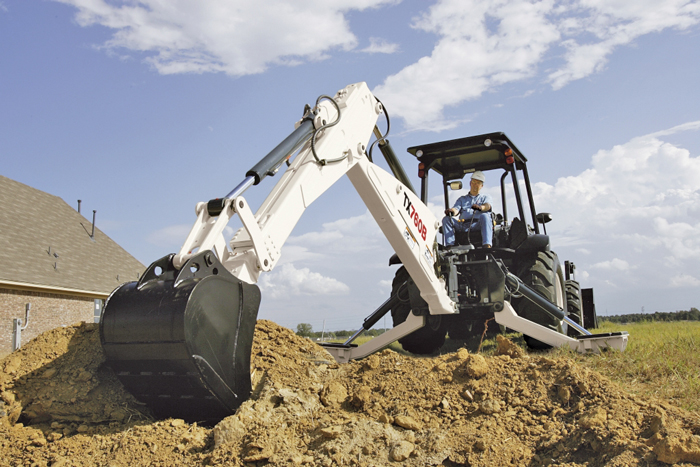
“Backhoe loaders are designed with the specific purpose of being adaptable,” says Jamie Wright, Product Manager of Terex Construction Americas. “They are the perfect tool for underground utility installation applications because they enable operators to use one machine to complete the majority of tasks on any jobsite.”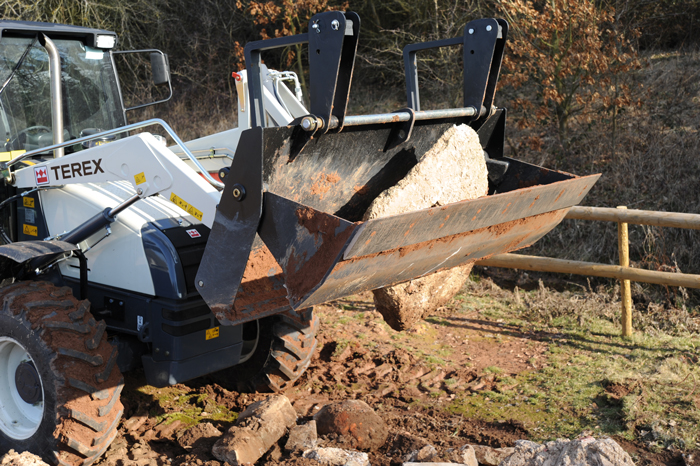 Advantages of Using a Backhoe Loader
Advantages of Using a Backhoe Loader
Backhoe loaders can be used for a variety of utility site tasks, including: placing and burying utilities such as sewer pipes or storm drains; digging, compacting and backfilling trenches; breaking up concrete; and digging postholes. Backhoe loaders are built to easily go from digging a trench to bringing in material to backfilling. And many manufacturers, including Terex, design their units to enhance these capabilities. “The front loader end on Terex backhoes, for instance, is designed with mechanical controls, giving operators the maneuverability and efficiency of working with a wheel loader,” says Wright, “while the backhoe end features advanced piloted controls, giving the machine excavator capabilities.”
According to Wright, backhoe loaders also excel at underground utility applications because they offer exceptionally good stability and balance for the operator and excellent visibility to the hole or trench thanks to their large windows and operator positioning within the cab. Also, they are engineered with two-speed hydraulic circuits that offer operators both speed and control.
And, Wright notes that backhoe loaders are a good choice when operators need to install underground utilities in sensitive ground conditions, like turf, because they can leave a lighter imprint than the steel tracks of a crawler excavator.
In underground utility installation applications, both sides of the backhoe are used equally — the determining factor is really based on the application. According to Wright, the backhoe, or excavator end, is used most frequently by contractors to trench in the utilities, and the loader end is most often used for backfilling.
In addition, utility contractors use backhoe loaders to load and unload trucks, as well as carry tools and materials to, around and from the work area, while the excavator side is mostly used to pick and place material.
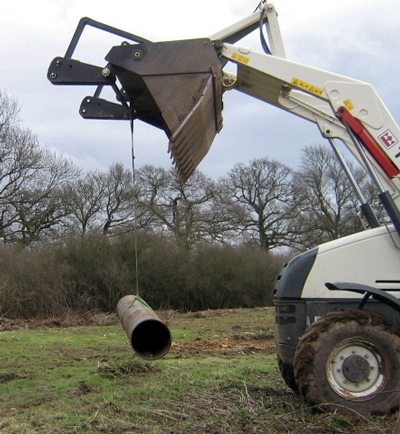 Getting Started
Getting Started
Whether digging or picking and placing jobsite materials, like storm drains or sewer pipes, using a backhoe loader can increase jobsite productivity and reduce operating costs. To maximize the performance of the machine, Wright offers operators these tips to follow in advance of project startup: “First and foremost, know the jobsite parameters. The scope of work and the working conditions are the biggest influencing factors when choosing the right machine to do the work. Then ask yourself what is needed to complete a job from beginning to completion — it’s not all just about digging.”
Wright says that operators need to be able to answer these questions before the job begins:
- Is this a typical jobsite or an exception?
- What tasks will the machine mostly be used for?
- How deep does the machine need to dig?
- How heavy are the materials that the backhoe loader is picking and placing?
- Are there other underground utilities that the crew needs to be aware of? Have these utilities been located, identified and clearly marked?
- How large is the area the machine will be working in?
- Is the entrance/exit to the jobsite restrictive for certain sizes of equipment?
- Is the jobsite going to limit certain equipment due to terrain conditions?
- What type of attachments will help complete this job?
Operators also need to be conscious of their surroundings, advises Wright. “Utility worksites involve a lot of people performing a multitude of tasks,” he says. “From traveling to different areas on a worksite, to operating the boom and stick, operators must continually be aware of their equipment’s surroundings to prevent contact with people or nearby objects on the worksite.”
Also, adds Wright, “It is important that operators call a locating service to do a site survey before they begin to dig. The hazard of cutting or disrupting existing utilities can be eliminated by asking the appropriate utility companies to mark the buried lines before a project starts.”
Finally, the powerful performance of backhoe loaders means that operators must watch out for collateral damage to nearby infrastructures. By following the guidelines in the owner’s manuals, properly using equipped safety features and remaining aware of worksite surroundings, operators can increase their safety and the safety of others.
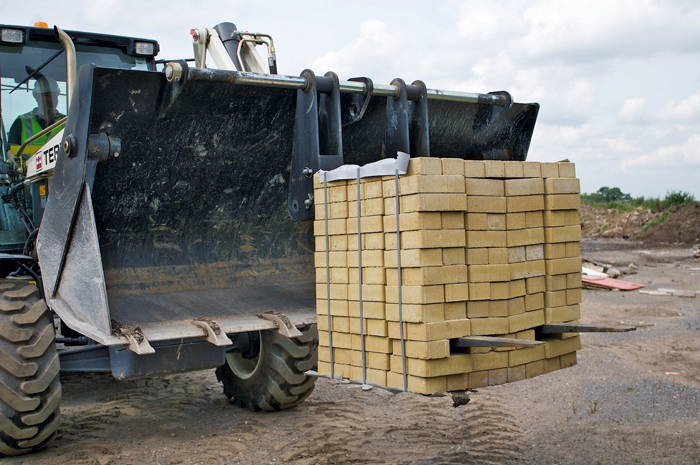 Best Practices
Best Practices
For utility contractors to be most efficient when operating a backhoe loader on a utility project, Wright recommends that operators select single hydraulic pump mode when digging around other utilities or lifting/lowering pipes and other jobsite materials when more control and less speed is needed. For instance, Wright advises operators to always select the single pump mode when working with heavy loads in order to slow the backhoe down for precise and safe placement “At Terex, we recommend that operators always operate their backhoe loader at the lowest engine speed that completes a task [generally between 1,500 to 1,800 rpm],” says Wright. “For example, when trenching at 1,800 rpm gives the best relationship of output to economical operation possible.”
Other best practices to follow when using a backhoe loader for underground utility applications are when using the loader end to backfill a trench, it is important to present the bucket square to the trench and take half a bucket width cut. And if the trench side walls are weak, Wright advises, that operators should backfill with the bucket at an angle to the trench. If working in a narrow, confined space, operators should use the backhoe slew system for backfilling.
Wright also recommends that when using the backhoe side of the machine to place heavy loads, operators need to deploy the stabilizer legs. “It’s crucial for the safety of operators to always use the stabilizers to level and stabilize the unit before digging and placing jobsite materials,” says Wright.
When lifting and/or transporting a load with a backhoe loader, adds Wright, operators must always make sure to secure the load correctly, travel and operate the machine at safe and appropriate speeds and avoid traversing side slopes whenever possible. Operators should also make a point of carrying the load as low as possible when traveling to reduce balance issues.
“To prevent accidents, such as tip-overs, from occurring during transit or digging with the backhoe, operators need to make sure that the unit does not exceed the manufacturer’s recommended guidelines for working or traveling on an incline,” continues Wright.
According to Wright, the most important things operators must remember to do when operating a backhoe are:
- Read the manufacturer’s owner and operator manuals before operating the machine.
- Know the weight of items that need to be placed and never exceed the manufacturer’s recommended guidelines for the unit’s operating capacities.
- Locate and identify all electrical, gas and fiber-optic lines, both overhead and underground, before digging.
- Be aware of obstacles or existing infrastructure in and around the machine’s working area.
- Stop working immediately if someone enters the machine’s working area.
- Wear a seatbelt at all times.
- Properly park and switch off the machine before leaving the cab.
Attachments for Productivity
With margins on jobsite bids tight, utility contractors are relying more heavily than ever on backhoe loaders and, more specifically, on attachments to enhance their productivity. According to Wright, Terex offers a variety of attachment options for backhoe loaders, including standard and multi-purpose buckets, high-capacity buckets, 7-in-1 buckets, trenching buckets, grading buckets, thumbs and hydraulic breakers, as well as forks, angle dozers, augers and compactors, to increase usage and versatility.
“Attachments can make all the difference in the types of applications a backhoe loader can do on an underground utility installation project,” he says. “For example, operators can use a bucket on the loader end to perform grading finishing work during site preparation and cleanup in areas where a traditional dozer can’t access or on sites where it doesn’t make sense to have an extra piece of equipment.
“And, a 7-in-1 bucket attachment is great for spreading and leveling jobsite materials, like fill dirt, over larger areas,” adds Wright. “Pallet fork attachments are easily able to carry cable, pipes and tiling around the jobsite, and grapple attachments can be used to pick up, carry and place heavier materials like storm drains and sewer lines.
“With a hydraulic thumb attachment,” continues Wright, “backhoe loaders can easily lift, move and place materials in and around existing landscapes, while an auger attachment is great to have on hand during the site restoration phase for drilling postholes for trees and shrubs.”
No matter what attachment an operator is using, the key to productivity is to make sure the machine’s hydraulic flow is matched to the attachment, and that it is easy for operators to change out and operate the attachment. “For instance,” finishes Wright, “quick-coupler systems make it fast and easy to change attachments and auxiliary hydraulics offer flexibility in adding attachments.”
In the end, backhoe loaders are ideal for underground utility work where other machines may not be as productive or when operating costs prohibit the use of multiple machines.
Amber Reed is a Public Relations Consultant for Signature Style PR, based in Huntersville, N.C.


